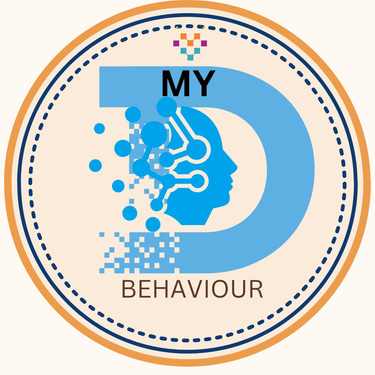Creating a Balanced Digital Environment for Cognitive Health
Digital Workspace And Cognitive System Part 5
Gajanan L. Bhonde,
7/31/20257 min read


The Importance of a Balanced Digital Environment
In today's technology-driven world, the significance of maintaining a balanced digital environment cannot be overstated. With the pervasive use of devices such as smartphones, tablets, and computers, individuals frequently find themselves engaged in constant digital interactions. While these technologies can foster connectivity and access to information, excessive use may lead to cognitive overload, heightened stress, and mental fatigue. Achieving a balance in our digital environment is vital for preserving cognitive health.
Cognitive overload occurs when an individual is exposed to an overwhelming amount of information, making it difficult to process and retain crucial data effectively. This phenomenon can be exacerbated by the incessant notifications and distractions that accompany modern technology. As a result, individuals may experience diminished focus and productivity, undermining their ability to engage meaningfully with their work and personal lives. The importance of a balanced digital environment lies in its capacity to mitigate these effects, promoting mental clarity and enhanced cognitive function.
Additionally, excessive screen time has been linked to increased levels of stress and anxiety. The constant barrage of information can trigger the body's stress response, leading to feelings of overwhelm and emotional fatigue. By cultivating mindfulness in our digital interactions—such as setting specific time limits for device usage and incorporating breaks into our routines—we can create a more harmonious relationship with technology. This practice will not only improve our cognitive health but also enhance our overall well-being.
Ultimately, fostering a balanced digital environment is essential for maintaining cognitive vitality. By recognizing the potential pitfalls of excessive technology use and implementing strategies for mindfulness, individuals can significantly benefit their mental health and cognitive functioning. Prioritizing this balance is crucial in navigating the complexities of the digital age.
Understanding Digital Detox
In today’s fast-paced world, the term “digital detox” has gained traction as an essential strategy for individuals seeking to reclaim their cognitive well-being. A digital detox involves intentionally stepping away from electronic devices and technology, allowing oneself to reconnect with the physical environment and mental state. As constant connectivity becomes a hallmark of modern life, the adverse effects of excessive screen time are increasingly evident, making this practice vital for establishing a balanced digital lifestyle.
The incessant use of smartphones, tablets, and computers can lead to various negative outcomes, such as increased stress levels, anxiety, and difficulty concentrating. Moreover, the constant influx of information can overwhelm our cognitive capacity, resulting in diminished productivity and creativity. By engaging in a digital detox, individuals can mitigate these adverse effects, fostering mental clarity and enhancing emotional resilience.
Effective strategies for implementing a digital detox can vary according to personal needs; however, several common approaches can be beneficial. Setting specific time limits for technology use, such as designating certain hours of the day as “screen-free,” can foster a healthier relationship with devices. Creating tech-free zones in the home, such as bedrooms or dining areas, encourages face-to-face interactions and promotes quality time with family and friends. Additionally, engaging in alternative activities, such as reading, gardening, or exercising, can provide enriching experiences that replace screen time while facilitating a deeper connection with oneself and one's environment.
Ultimately, a digital detox strives to create a healthier, more balanced relationship with technology. By understanding its significance and integrating effective strategies into daily life, individuals can promote cognitive health and achieve a more harmonious existence in an increasingly digital world.
Setting Boundaries for Technology Use
In today's fast-paced digital landscape, establishing clear boundaries around technology use is essential for maintaining cognitive health. One effective strategy for achieving this is to create device-free zones within your home. These zones can be thoughtfully designated areas such as the dining room, bedroom, or family spaces where technology is discouraged or prohibited altogether. By fostering environments free from digital distractions, individuals can engage more meaningfully with their surroundings and promote beneficial face-to-face interactions.
In addition to device-free zones, it is vital to set specific times for technology usage. Designating distinct periods for engaging with devices can help structure routines and prevent technology from encroaching upon activities that promote mental well-being, such as reading, engaging in hobbies, or spending quality time with loved ones. For example, establishing a rule to refrain from using electronic devices during meals or before bedtime can enhance both familial connections and sleep quality. Being intentional about when to utilize technology helps individuals regain control over their digital habits.
Recognizing the signs of digital overload is another crucial aspect of setting boundaries. Symptoms may include feelings of anxiety, irritability, or an inability to concentrate. When individuals begin to notice these sensations, it may indicate a necessity to reassess their technology usage. Taking regular breaks, engaging in offline activities, and practicing mindfulness can serve as effective countermeasures against the adverse effects of excessive screen time. Ultimately, taking proactive steps to set boundaries around technology not only supports cognitive health but also encourages a more balanced lifestyle.
Organized Digital Spaces for Clarity
In an increasingly digital world, maintaining organized digital spaces is essential for enhancing productivity and fostering mental clarity. A cluttered digital environment can lead to feelings of overwhelm, decreased efficiency, and hindered cognitive performance. Implementing effective strategies to organize one's digital files, communications, and overall online presence can create a serene digital workspace that supports cognitive health.
To begin, categorizing files into clearly defined folders is crucial. Utilizing a logical hierarchy will not only facilitate easy access to documents but also minimize the time spent searching for important information. Regularly reviewing and purging unnecessary files can significantly reduce clutter and ensure that only relevant materials are easily retrievable. This practice promotes a calm digital environment, allowing for more focused and productive work sessions.
Managing communication platforms effectively is another important aspect of creating an organized digital space. Limiting the number of communication tools utilized, and adhering to a specific protocol for each platform, can significantly reduce distractions. Establishing designated times for checking and responding to emails, messages, and notifications can help mitigate interruptions, allowing individuals to concentrate on tasks at hand. Employing tools such as email filters and notification settings may also aid in streamlining communications, thus promoting a more focused work atmosphere.
Furthermore, utilizing digital productivity tools, such as task managers and calendars, can assist in maintaining organization and managing time efficiently. These tools help allocate time for various tasks, prioritize responsibilities, and set clear deadlines. By having a well-structured plan in place, distractions from a chaotic digital workspace can be minimized, encouraging improved focus and cognitive clarity.
Scheduling Regular Breaks
In an age where digital devices dominate our daily lives, managing screen time is vital for maintaining cognitive health. A well-structured routine that includes scheduled breaks can significantly enhance both mental and physical well-being. Research indicates that prolonged exposure to screens can lead to cognitive fatigue and decreased productivity. Therefore, taking regular intervals away from technology is essential for rejuvenating the mind and body.
Experts recommend adhering to the 20-20-20 rule, which suggests that for every 20 minutes spent looking at a screen, individuals should take a 20-second break to look at something 20 feet away. This brief intermission helps reduce eye strain and encourages a moment of mental diversion. Additionally, incorporating longer breaks of about five to ten minutes every hour can be beneficial. During these extended breaks, engaging in physical activities such as stretching, walking, or practicing mindfulness can further refresh one’s focus and energy levels.
Participating in different activities during these breaks is crucial as well. Whether it be stepping outside for fresh air, practicing a hobby, or meditating, varying the types of breaks can greatly improve overall engagement and productivity. Not only do these activities provide a mental reset, but they also allow individuals to reconnect with their surroundings, which is beneficial for cognitive health.
In essence, scheduling regular breaks contributes to a balanced digital environment, fostering a healthier relationship with technology. By being mindful of screen time and planning structured intervals for disengagement, individuals can mitigate the adverse effects of excessive digital exposure. Implementing these strategies not only bolsters cognitive functioning but also enhances overall well-being in an increasingly tech-driven world.
Mindful Technology Usage
In the contemporary digital age, technology plays an integral role in our daily lives, from communication to entertainment. However, its pervasive presence can lead to unintentional consequences on cognitive health. Therefore, adopting a mindset of mindful technology usage is essential for fostering a balanced digital environment. This concept encourages individuals to be intentional in their interactions with screens, ensuring that technology serves as a tool for enhancement rather than a source of distraction.
One of the first steps toward mindful technology usage is to engage in self-reflection regarding digital habits. Consider keeping a log of technology interactions to identify patterns that may impact your cognitive well-being. Tracking screen time and the associated activities can reveal excessive use, particularly in non-essential areas such as social media or gaming, that may detract from more meaningful engagements. By maintaining awareness, individuals can make conscious choices that prioritize more fulfilling and health-promoting activities.
An effective strategy for cultivating a healthier relationship with technology involves setting boundaries. For instance, establishing "tech-free" times or zones within the home can enhance overall mindfulness. Designating periods during meals or before bedtime when devices are set aside allows for deeper connections with family and friends, while also promoting better sleep hygiene. Opting for digital detox weekends or regular breaks from screens can rejuvenate the mind and facilitate a reconnection with the present moment.
Additionally, curating digital content purposefully can lead to a more enriching online experience. Instead of passively consuming content, actively choose media that sparks interest and promotes learning. Engaging with educational podcasts, documentaries, or articles fosters a constructive relationship with technology. By being selective about digital consumption, individuals empower themselves to utilize technology in a way that aligns with their cognitive health goals, ultimately contributing to a more balanced digital environment.
Conclusion and Future Directions
In our increasingly digital world, the importance of establishing a balanced digital environment cannot be overstated. Throughout this blog post, we have explored various dimensions of digital wellness, emphasizing the impact of technology on cognitive health. It is evident that while digital devices offer numerous benefits, they can also lead to cognitive overload, increased stress, and diminished attention spans. Therefore, cultivating a digital environment that promotes mental well-being is essential.
First, we addressed the significance of mindfulness in technology use. By being conscious of our time spent on devices and the type of content we engage with, we can better manage our digital consumption. Engaging in activities that encourage mental break, such as reading, meditating, or spending time outdoors, can further enhance cognitive health. Additionally, setting boundaries around technology use, such as limiting screen time before sleep or during meals, can foster healthier habits.
Moreover, the article highlighted the importance of curating online content. By selectively following positive, inspiring, and educational sources, individuals can create a more beneficial digital landscape. A focus on meaningful engagement over passive consumption may lead to improved mental clarity and reduced stress levels.
As we look to the future, there exists an opportunity for further exploration into topics such as technology hygiene, the impact of social media on mental health, and strategies for fostering effective digital communication. These subjects could provide valuable insights into nurturing a balanced digital environment. We invite readers to reflect upon their personal experiences and consider how they can take steps toward a more harmonious digital lifestyle, ensuring that technology serves as a tool for enhancement rather than a source of distraction.
